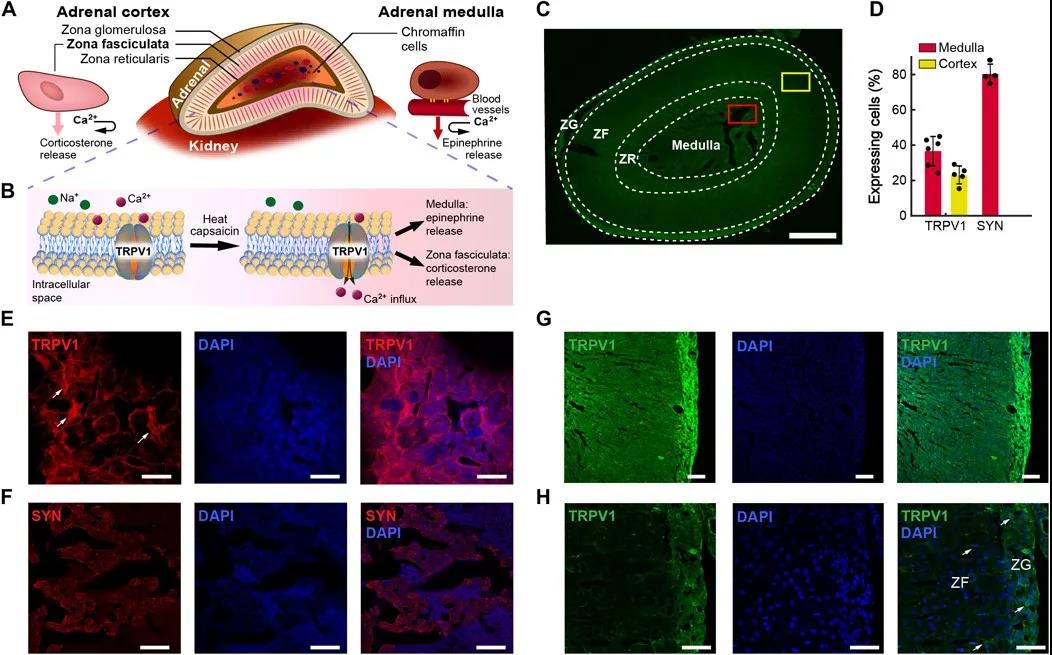Science Advances: Using magnetic nanoparticles to adjust organ function remotely
QQ Academic Group: 1092348845
Detailed
The field of bioelectronic medicine attempts to regulate the electrical signal transmission in surrounding organs, thereby providing precise control over the time of physiological functions. This is usually done with an implantable device, which is generally not suitable for interfacing with soft and highly vascularized organs. In view of this, researchers such as Polina Anikeeva of the Massachusetts Institute of Technology and Alik S. Widge of the Harvard Medical School have shown an alternative strategy for regulating peripheral organ function. The endogenous expression of potential vanillic acid subfamily member 1 (TRPV1) and the heat-radiating alternating magnetic field of remotely applied magnetic nanoparticles (MNP).
Point 1) Use this method to wirelessly control the adrenal hormone secretion of genetically intact rats. 2) The flow of TRPV1-dependent calcium into the adrenal cortex and medulla oblongata cells is sufficient to promote the rapid release of corticosterone and (positive) adrenaline. Because changes in these hormone levels are associated with mental conditions (such as post-traumatic stress disorder and major depression), this method may be helpful in studying the physiological and psychological effects of stress.
References: Dekel Rosenfeld, et al. Transgene-free remote magnetothermal regulation of adrenal hormones. Science Advances, 2020. DOI: 10.1126 / sciadv.aaz3734https: //advances.sciencemag.org/content/6/15/eaaz3734? Rss = 1
Source of information: Strange Things
Point 1) Use this method to wirelessly control the adrenal hormone secretion of genetically intact rats. 2) The flow of TRPV1-dependent calcium into the adrenal cortex and medulla oblongata cells is sufficient to promote the rapid release of corticosterone and (positive) adrenaline. Because changes in these hormone levels are associated with mental conditions (such as post-traumatic stress disorder and major depression), this method may be helpful in studying the physiological and psychological effects of stress.
References: Dekel Rosenfeld, et al. Transgene-free remote magnetothermal regulation of adrenal hormones. Science Advances, 2020. DOI: 10.1126 / sciadv.aaz3734https: //advances.sciencemag.org/content/6/15/eaaz3734? Rss = 1
Source of information: Strange Things
- Previous: Improve the toughness
- Next: What is graphene?


 Application
Application
